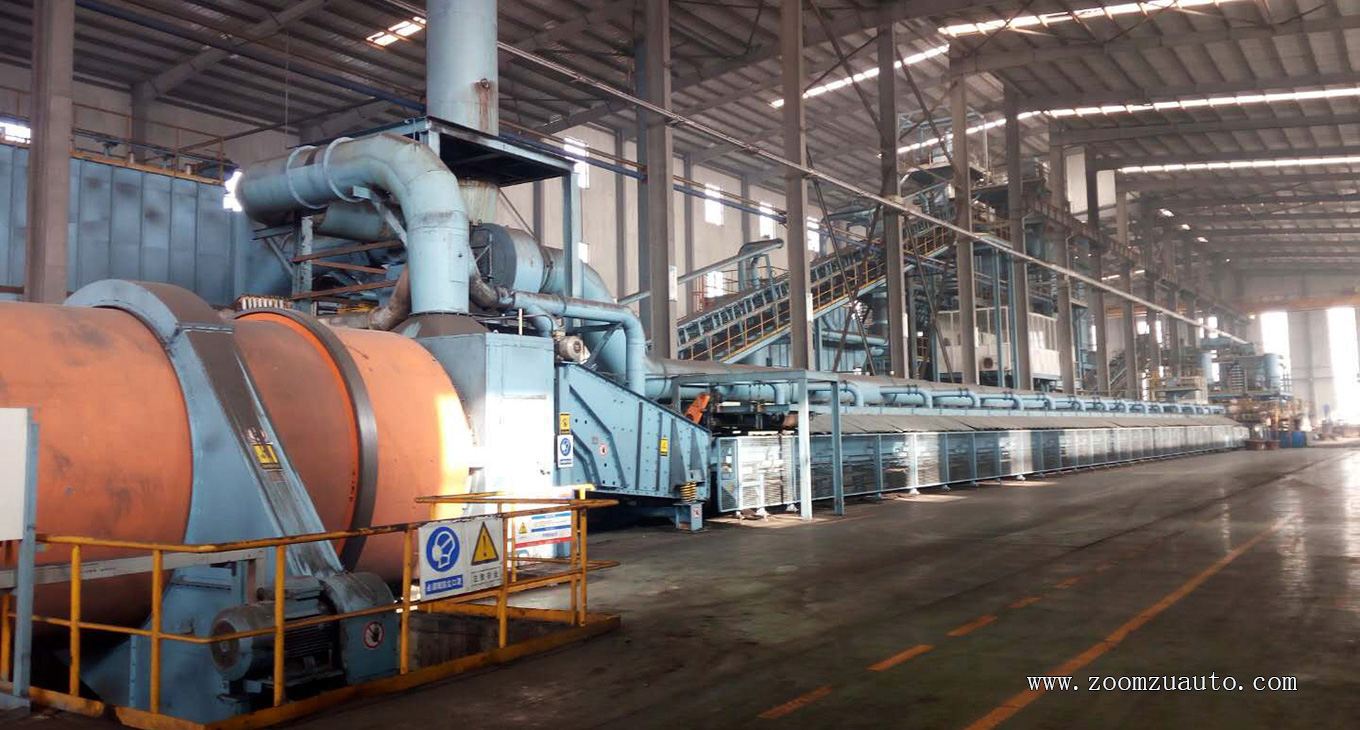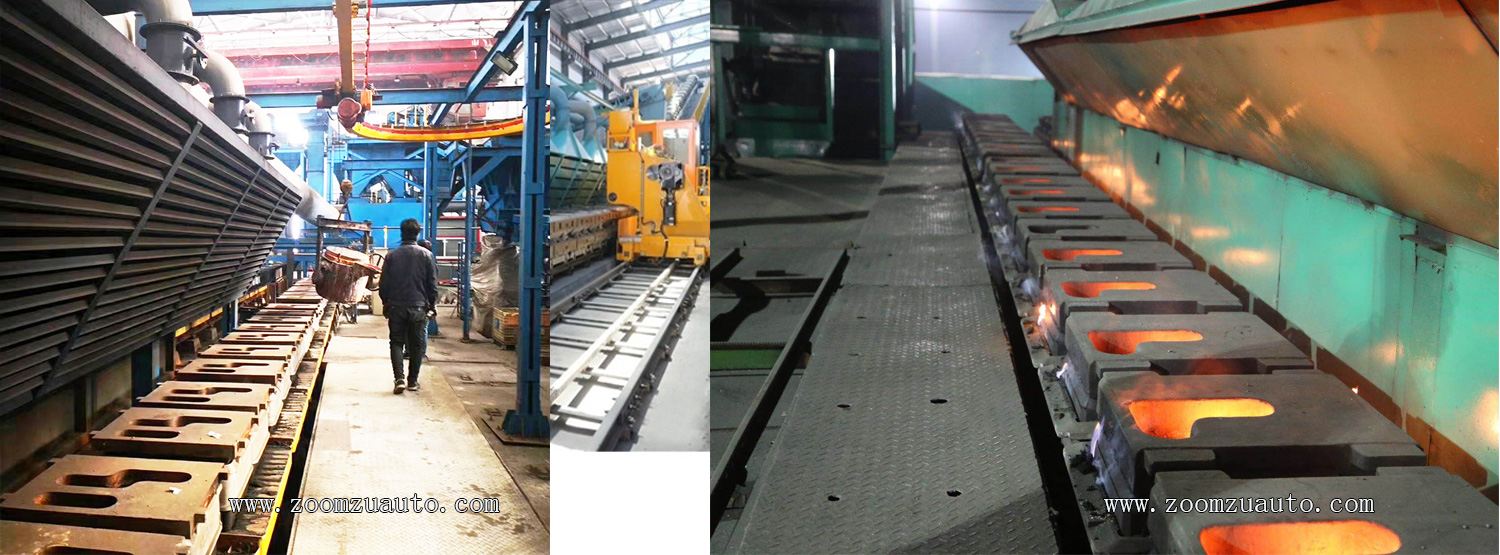-

-
Guangzhou Zhongzhu Machinery Co. LtdSand casting molding machine manufacturer
-
008613926238353 WhatsApp:
-
E-mail: 470199755@qq.com

The common automated casting and molding production lines for tidal sand (clay sand) mainly include vertical parting box less injection molding line, horizontal parting box less injection molding line, and multi contact static pressure box molding line. In the past decade of rapid development and widespread application, machine automatic molding technology, automated pouring, and automated sand mixing and sand making technology have become very mature. Currently, most casting molding lines work on the principle of using pneumatic sand addition and hydraulic compaction to achieve automatic molding of sand molds.

Vertical parting box less molding machine is a method of injecting casting sand into a molding chamber with a template in a vertical manner through compressed air. Therefore, this vertical sand injection method is also known as vertical sand injection. After the sand injection is completed, the interior of the molding chamber is horizontally squeezed and compacted by a hydraulic cylinder. The advantage of this molding line is high production efficiency, and it can complete the production of 300-500 molding sand molds per hour, which is suitable for mass production Large scale casting production of castings with high demand, such as automated casting and molding production of castings for building fasteners, sewer fittings, cast iron fittings, etc. The investment and production cost of the vertical parting box less molding line are relatively high, and strict requirements are placed on the quality of the molding sand. It is necessary to equip it with a large and standardized wet mold sand treatment system for casting sand treatment. When using the vertical parting box less molding line for automatic molding production, it is also necessary to quickly pour the sand mold, and a large melting capacity electric furnace is needed to provide sufficient iron for its pouring in a timely manner.

The horizontal parting box less molding machine uses air pressure to add sand inside the sand box, and hydraulic pressure to compact the sand inside the sand box; Its characteristic is that the mold divides the molding machine into two parts, an upper sand box and a lower sand box, in a horizontal state. After completing the molding, the sand mold is placed horizontally, and the internal cavity of the sand mold is also in a horizontal state during pouring; The production efficiency of the horizontal parting box less molding machine is 60-120 boxes per hour, making it easy to lower the core and replace the mold quickly and conveniently. It is suitable for the production of smaller and more complex castings. The automatic molding of castings has a wide range of applicability, low investment cost, and flexible operation methods. Suitable pouring lines can be selected according to the site requirements of the casting workshop, Selective production can also be carried out based on the casting requirements and energy costs of the castings, such as daytime molding and nighttime pouring; The homework methods are more diverse and flexible. At the same time, in the development and promotion of horizontal parting molding machines in recent years, their significance is to some extent equivalent to replacing the traditional manual sand casting molding. The cost of castings will be relatively reduced and the quality control of castings can be well guaranteed.

The multi contact static pressure box molding line uses air flow and sand to fill the individual sand box with molding sand, and then uses multiple sets of hydraulic multi contact to compact the inside of the sand box under high pressure. The compacted sand mold and sand box are integrated into transportation, flipping, box closing, and pouring; The characteristics of the multi contact static pressure box molding line are good compaction and uniformity, quiet working environment, high yield, wide coverage of castings that can be molded, and a molding speed of about 40-110 boxes per hour (depending on the size of the sand box and the requirements of the casting production process). It is generally used in the production of complex and difficult casting molds, such as engine cylinder blocks and brake drums for automobiles; The whole line has a high degree of automation, but the operating cost is high. It has a large space for the use of the casting workshop, and the molding and pouring are carried out simultaneously with high requirements for supporting equipment. The investment cost is high, and it is widely used in large casting enterprises;